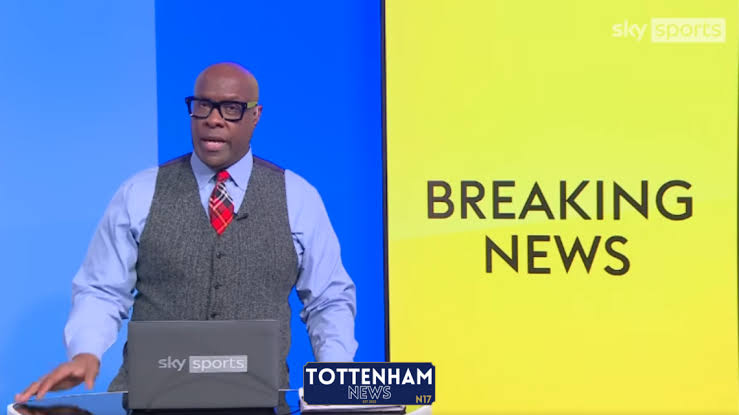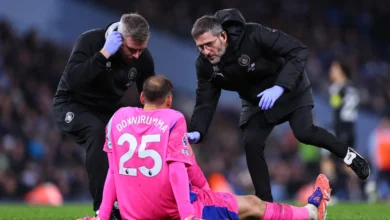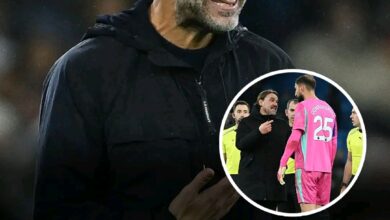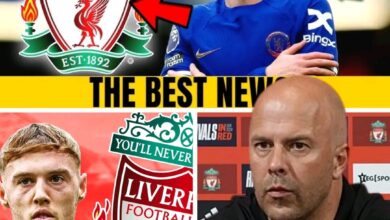The contract status of every Tottenham player and what it means for the transfer window

Tottenham Hotspur stands at a pivotal juncture in their modern history, with a sprawling squad structure that presents both opportunities and challenges for the upcoming transfer windows. Under the stewardship of head coach Ange Postecoglou and technical director Johan Lange, the North London club has undergone a significant philosophical shift towards youth development and long-term planning. This strategic transformation has resulted in a complex web of contract situations that will fundamentally shape the club’s transfer strategy and squad composition for years to come.
The Australian manager’s arrival has catalyzed a major rebuild that extends far beyond tactical adjustments on the pitch. The recruitment policy has pivoted decisively towards securing promising young talents on extended contracts, exemplified by the acquisitions of players like Archie Gray, Lucas Bergvall, Wilson Odobert, and Luka Vuskovic. These signings represent not merely immediate squad reinforcements but strategic investments in the club’s future, each arriving with substantial contract lengths that provide both security and flexibility for future planning.
However, this youth-focused approach has created a fascinating dichotomy within the squad structure. While the club secures its future through these long-term commitments to emerging talents, several established players find themselves approaching critical contract crossroads. The departure of Fraser Forster, Alfie Whiteman, Sergio Reguilon, and Timo Werner upon the expiration of their contracts signals a broader transition period, but these exits represent merely the beginning of a more extensive contract restructuring process.
The most pressing contract situations involve players whose current agreements conclude in 2025, creating immediate decision points that will significantly impact the summer transfer window. Ben Davies represents perhaps the most straightforward case among this group. The versatile Welsh defender has been a stalwart presence at the club, offering reliability and experience across multiple positions. The expectation within football circles suggests that Tottenham will exercise their option to extend Davies’ contract through 2026, providing the club with continued flexibility and ensuring they receive appropriate compensation should a departure materialize.
The interest from Leeds United adds an intriguing dimension to Davies’ situation. His versatility as a defender capable of operating at left-back, center-back, or even as a defensive midfielder makes him an attractive proposition for teams seeking experienced, adaptable players. Should Tottenham extend his contract and then facilitate a move, they would command a reasonable transfer fee for a player who has provided years of dependable service.
Pierre-Emile Hojbjerg’s situation, while technically falling under the 2025 category, has already reached its resolution. The Danish midfielder’s contractual obligation to join Marseille represents a calculated conclusion to his Tottenham career. His departure reflects the club’s willingness to move on from players who no longer fit the tactical blueprint, while ensuring they receive appropriate compensation through structured deals.
The most intriguing case in this immediate category involves Mathys Tel, the young French attacker whose loan spell from Bayern Munich concluded without the fanfare that accompanied other departures. The 20-year-old’s talent is undeniable, but his limited impact during his time in North London has created a complex negotiation scenario. Tottenham’s interest in restructuring the deal with Bayern Munich suggests they see potential in the player but recognize that the current financial terms may not align with his demonstrated value.
This situation exemplifies the delicate balance modern clubs must strike between identifying talent and managing financial resources effectively. Tel’s age and potential make him an attractive long-term prospect, but his integration challenges highlight the complexities of loan arrangements and the importance of finding the right environmental fit for developing players.
The 2026 contract expiration group presents the most significant strategic challenges for Tottenham’s leadership. Son Heung-min stands as the marquee name in this category, his status as club captain and cultural icon making his contract situation a matter of paramount importance. The South Korean’s influence extends far beyond his on-field contributions, representing Tottenham’s most valuable marketing asset in the lucrative Asian markets.
The exercise of the contract option extending Son’s agreement to 2026 demonstrated the club’s commitment to retaining their talisman, but persistent transfer speculation, particularly regarding interest from the Saudi Pro League, creates an ongoing narrative that the club must navigate carefully. Son’s injury-hampered performances during portions of the recent season may have contributed to external questioning of his continued effectiveness, but his track record of resilience and adaptation suggests premature concerns about his declining abilities.
The financial implications of Son’s potential departure would be substantial, extending beyond the immediate transfer fee to encompass commercial partnerships, merchandise sales, and regional broadcasting arrangements. His popularity in Asia has opened doors for Tottenham that would be difficult to replicate with alternative signings, making his retention a priority that transcends pure football considerations.
Rodrigo Bentancur and Yves Bissouma represent contrasting scenarios within this 2026 group. Bentancur’s consistent performances and tactical versatility have positioned him favorably for contract extension discussions. His ability to operate effectively in multiple midfield roles aligns perfectly with Postecoglou’s tactical flexibility requirements, while his experience and leadership qualities provide valuable stability during the ongoing transition period.
Bissouma’s situation appears more precarious, with the club potentially more receptive to attractive offers for the Malian international. His undeniable talent has been somewhat overshadowed by consistency concerns and tactical fit questions within Postecoglou’s system. The summer transfer window could provide clarity on whether Bissouma can establish himself as an indispensable part of the long-term project or whether both parties might benefit from exploring alternative arrangements.
Bryan Gil’s expected departure following his loan spell at Girona reflects the harsh realities of modern football development. Despite his technical abilities and promise, the Spanish winger has struggled to establish himself in Tottenham’s first-team plans. His situation illustrates the challenges facing young players who arrive with considerable potential but fail to adapt to the specific demands of their new environment.
Matthew Craig’s position represents a common dilemma for academy products who reach the threshold between youth and senior football without securing a clear pathway to first-team involvement. His series of loan experiences suggests a player caught between levels, possessing talent sufficient for professional football but lacking the exceptional qualities required to break into Tottenham’s competitive squad structure.
The 2027 contract expiration category features some of Tottenham’s most valuable assets, with Cristian Romero headlining a group that could define the club’s immediate future. The Argentine defender’s status as a World Cup winner and his consistent performances at the highest level make him one of the most sought-after center-backs in European football. His potential departure would represent not just a significant financial loss but a substantial weakening of Tottenham’s defensive foundation.
Romero’s situation embodies the challenges facing clubs outside the traditional elite tier in retaining world-class talent. His performances have undoubtedly attracted attention from clubs capable of offering Champions League football and higher salary packages. Tottenham’s ability to convince Romero to commit his peak years to the project will serve as a barometer for their broader ambitions and attractiveness to elite-level players.
The financial implications of any Romero transfer would be substantial, with his market value reflecting both his proven ability and his age profile. However, the strategic cost of losing such a player during a rebuilding phase could outweigh pure financial considerations, particularly given the scarcity of defenders with his combination of technical ability, physicality, and experience.
Richarlison presents a fascinating case study in talent versus availability. The Brazilian forward’s undeniable quality when fit and his continued selection for the national team demonstrate his elite-level capabilities. However, his persistent injury struggles have prevented him from establishing consistent momentum in his Tottenham career. His situation highlights the modern game’s demands for durability alongside talent, with clubs increasingly reluctant to invest heavily in players with concerning injury histories.
The emergence of Mikey Moore as a priority for contract extension reflects Tottenham’s commitment to nurturing homegrown talent while recognizing the commercial and competitive advantages of developing local players. At just 18 years old, Moore represents the intersection of the club’s youth policy and their practical need for homegrown players to meet squad registration requirements.
Both Alfie Devine and Dane Scarlett find themselves at crucial junctures in their development paths. Their extensive loan experiences have provided valuable exposure to senior football, but the time is approaching when definitive decisions must be made regarding their long-term futures. The success or failure of their next developmental steps will largely determine whether they can transition from promising prospects to established first-team contributors
The 2028 contract expiration group represents a blend of established performers and strategic investments that form the core of Tottenham’s medium-term planning. James Maddison’s inclusion in this category reflects his successful integration into Postecoglou’s system, with his 23 goal involvements across 45 matches demonstrating his continued effectiveness at the highest level. Maddison’s creative abilities and set-piece expertise provide crucial elements that complement the high-intensity, attacking philosophy implemented by the coaching staff. His age profile, approaching 28, positions him perfectly within the sweet spot of experience and remaining peak years, making him an ideal candidate for contract extension discussions.
Dejan Kulusevski and Pedro Porro represent two of the most successful acquisitions in recent transfer windows, their consistent performances and tactical adaptability making them integral to the team’s structure. Kulusevski’s versatility across multiple attacking positions provides tactical flexibility that modern coaches increasingly value, while Porro’s attacking contribution from the right-back position exemplifies the evolution of full-back play in contemporary football. Guglielmo Vicario’s rapid establishment as the club’s number one goalkeeper has exceeded expectations, his shot-stopping ability and distribution skills aligning perfectly with the team’s playing style. His relatively young age for a goalkeeper suggests potential for long-term stability in a position that has experienced considerable turnover in recent seasons.
The cases of Djed Spence and Ashley Phillips illustrate different aspects of player development and opportunity creation. Spence’s remarkable turnaround from peripheral figure to valuable squad member demonstrates the possibilities that exist when talent meets opportunity and determination. His contract extension during the season reflected the club’s recognition of his improved contribution and future potential.
Phillips represents the ongoing challenge of developing young defenders, a process that typically requires patience and carefully managed exposure to senior football. His loan experiences have provided valuable development opportunities, but the transition to first-team contribution represents a significant step that will determine his long-term future at the club.
The players contracted through 2029 and beyond represent Tottenham’s most significant investments in future success. Brennan Johnson, Micky van de Ven, and Wilson Odobert embody the club’s strategy of securing promising talent on extended agreements that provide both development time and asset protection.
Johnson’s explosive pace and direct attacking style have added a new dimension to Tottenham’s forward play, while van de Ven’s composure and ball-playing ability from center-back align perfectly with modern defensive requirements. Odobert’s arrival represents a calculated investment in potential, with his development trajectory closely monitored as he adapts to English football demands.
The homegrown contingent within this group, including Jamie Donley, Will Lankshear, Alfie Dorrington, and Callum Olusesi, reflects the club’s commitment to academy development while addressing practical squad registration requirements. Their progression will be crucial not only for their individual careers but for the club’s ability to maintain competitive squads within regulatory constraints.
Brandon Austin’s emergence as the established homegrown goalkeeper option provides crucial depth and succession planning behind Vicario and Antonin Kinsky. His Premier League experience, though limited, represents valuable development that positions him favorably for future opportunities. The 2030 group, featuring significant investments like Dominic Solanke, Archie Gray, and Destiny Udogie, represents the foundation upon which Tottenham’s medium-term success will be built. These players arrive with either proven quality or exceptional potential, their long-term contracts providing security and flexibility for strategic planning.
Kevin Danso’s recent permanent signing and five-year contract commitment demonstrates the club’s continued belief in his abilities despite limited opportunities. His experience and defensive qualities provide valuable depth options while his contract length suggests confidence in his eventual contribution.
The longest-contracted players, Lucas Bergvall and Antonin Kinsky, represent perhaps the most strategic acquisitions in terms of long-term planning. Bergvall’s rapid integration and immediate impact have validated the investment, while Kinsky’s potential provides goalkeeping succession planning that extends well into the next decade.
The complex web of contract situations creates both opportunities and constraints for Tottenham’s transfer window planning. The immediate need to address 2025 and 2026 expirations will likely drive specific recruitment priorities, while the stability provided by longer-term contracts offers flexibility in other areas.
The potential departure of key players like Son Heung-min or Cristian Romero would necessitate significant reinvestment, both in terms of playing ability and leadership qualities. However, the financial resources generated by such sales could fund multiple acquisitions that strengthen the squad’s overall depth and quality.
The homegrown player requirements create additional complexity, with the club needing to balance competitive quality with registration practicalities. The development of academy products becomes not just a philosophical preference but a competitive necessity.
Tottenham Hotspur’s contract landscape reflects a club in transition, balancing immediate competitive needs with long-term strategic planning. The decisions made regarding player extensions, departures, and new acquisitions will fundamentally shape the club’s trajectory over the coming seasons.
The youth-focused recruitment strategy provides a foundation for sustainable success, but the integration of experienced quality remains crucial for immediate competitiveness. The challenge lies in maintaining this balance while operating within financial constraints and regulatory requirements.
The coming months will prove crucial in determining whether Tottenham can successfully navigate this complex contract situation while maintaining their competitive ambitions. The decisions made regarding key players will send important signals about the club’s direction and ambition, influencing both current squad members and potential future acquisitions.
Success in managing these contract situations will require careful negotiation, strategic planning, and clear communication of the club’s vision. The outcomes will ultimately determine whether this period represents a successful transition toward sustainable success or merely another chapter in the ongoing evolution of a club seeking to establish its place among football’s elite.














